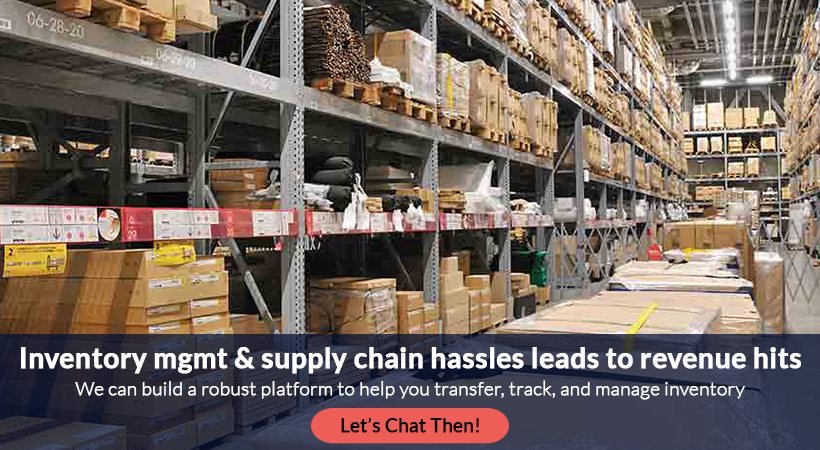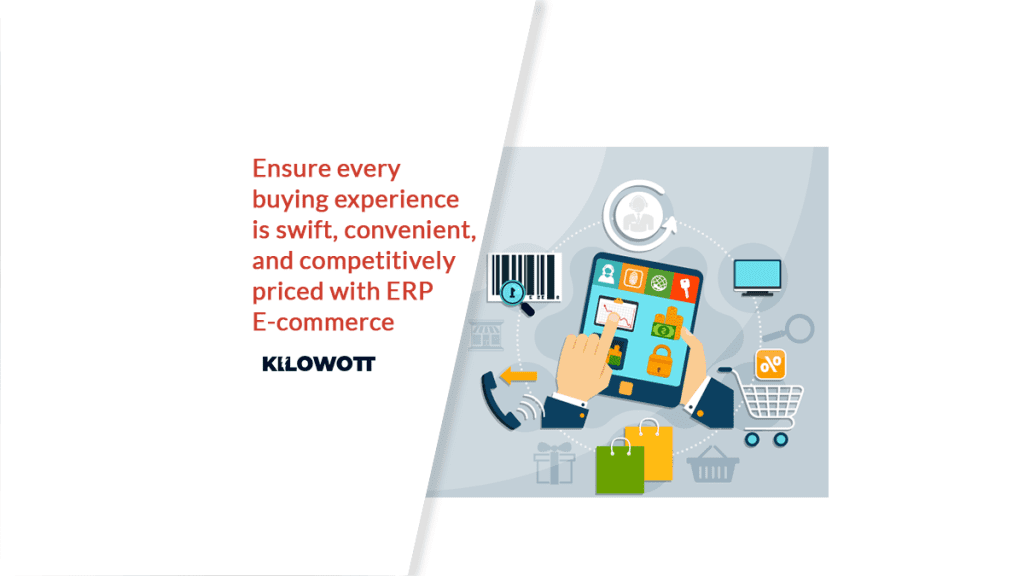An ERP (Enterprise Resource Planning) system unifies and automates business processes such as extracting user data, performing operations on that data, scheduling operations, and maintaining records of the data or user actions.
RPA which stands for Robotic Process Automation, on the other hand, is one of the most widely researched sectors in the industry due to its ability to revolutionize traditional business processes on a variety of levels.
More and more jobs are being taken over by AI and robotic process automation from ERP users. RPA records users as they enter data, perform commands, and move documents across apps, simulating human behavior.
ERP’s machine-learning AI searches for patterns in data, “learns” what to expect, makes judgments, and even attempts to forecast the future.
Both technologies are enabling a new type of ERP that is more automated, responsive, and user-friendly than its often intractable forerunners.
Our question is, where does robotic process automation (RPA) fit into this picture of ERP within retail or any supply chain function? And where do the two come together?
Why do we need RPA in ERP Systems?
RPA can cover the gap between Cloud ERP and legacy applications, bringing the value of the old operation into the cloud.
It facilitates the smooth passage of Cloud ERP selection hurdles, allowing businesses to reap the benefits of cutting-edge technology.
RPA in ERP systems enables firms to reduce the cost and labor intensity of these time-consuming tasks.
This has an impact on developers’ processes and frees up time for them to focus on other important tasks.
What steps are followed while implementing RPA in ERP Systems?
RPA is an excellent solution for acting as a bridge between legacy software and ERP applications, allowing you to keep the conventional program’s industry benefits while taking advantage of the RPA-implemented ERP’s performance improvements.
When automating business processes with RPA and ERP systems, there are a few factors to keep in mind: – What should be automated?
To begin, we must determine which operation we wish to automate.
First, automate tasks like sending emails, creating consumer reports, and running the process for a specific data/user.
As a result, it may be able to assist in reducing the operation’s time consumption. RPA bots can comprehend the logic behind implementing such specialized duties and then perform them in a seamless manner.
Next, building a process plan is necessary to ensure that you understand the concept and each activity that must be taken to finish the process.
RPA creates efficiency by automating existing processes and eliminating any disorganization in the process, as well as adding any additional stages that are needed.
ERP-based automation will lag behind next-generation digital transformation as long as it is limited to the automation of processes embedded in ERP applications.
RPA does not necessitate the creation of code, nor does it necessitate direct access to the applications’ code or databases.
To learn more about Robotic Process Automation Architecture and Tools, click on the CTA below
What are the opportunities for RPA in ERP?
Process involving robots Although supply chain automation is still in its infancy, firms are increasingly incorporating it into their supply chains to make them more lean and efficient.
RFID (Radio Frequency Identification), ERP (Enterprise Resource Planning), CRM (Customer Relationship Management), and other technologies have long been used by businesses in fields including healthcare, retail, and manufacturing.
Software robots were not flexible enough to handle the complicated circumstances that occasionally arose in the early stages of RPA in Supply Chain since they were stupid and could only automate areas of the supply chain that were straightforward and followed a set pattern.
Manual intervention was required for everything else.
Now, with the addition of intelligent bots with machine learning skills and cognitive capacities, RPA systems are beginning to resemble humans to some level. With these technologies in mind, we’re moving closer to automating jobs specified by business rules and laying out instructions for processing inputs.
Enabled with AI, RPA in Supply Chain can be utilized at a higher level to predict outcomes and support complicated decision-making, assisting workers with more than just robotic jobs. Here are a few sectors of the supply chain that are ready to be transformed by RPA:
Payments and Order Processing
A supply chain’s order placing and processing phase is divided into three stages:
- Optional products
- Processing of payments
- confirmation of order placement
Even today, some organizations in certain industries rely on archaic manual paperwork to perform transactions that might easily be digital.
Order processing and payments can be automated such that data is directly absorbed into the company database, payment gateways process the desired amount, and a software solution sends out order confirmation emails and SMS messages.
Currently, with the advent of AI, various insurance businesses rely on bots to automate claims processing.
By automating this back-office work, organizations can ensure their staff focus on quality jobs that demand human intellect.
Organizations must guarantee that these processes are tightly integrated and that there are no faults from order placing to delivery in order to maximize efficiency and maintain a smooth supply chain.
Automated Email
Supply chains that are well-maintained prioritize one factor – Communication.
Maintaining good communication with suppliers, manufacturers, transportation service agencies, and customers is an important aspect of any supply chain.
Despite the fact that clear and effective communication is so important in supply chains, it is also one of the areas where there is a lot of room for improvement.
Email communication must be set up with RPA to ensure proper collaboration between personnel in different departments.
When shipments have been successfully delivered, when they are stuck in the middle or delayed, and when they need to be canceled, it is vital to establish communication processes. In order for the client to have a pleasant experience, effective communication amongst all parties involved must be established.
When a specific event occurs, RPA can be utilized to automate this communication process by sending out emails and SMS messages.
Automated Inventory Management
Inventory management is at the heart of the supply chain. Suppliers and manufacturers must constantly monitor their inventory levels to ensure that they have adequate items and replacement parts to meet demand.
RPA can help with inventory management by keeping track of stock levels, alerting managers when product stock levels are low, and automatically replenishing products when they fall below a given threshold.
Furthermore, by analyzing past data and drawing out demand trends, an RPA system can assist in predicting the ideal inventory levels. RPA in Supply Chain would make inventory management more efficient and always up to date, allowing for demand spikes.
Improved insights from Robotic Process Automation in Supply Chain can lead to better decision-making when it comes to inventory restocking, resulting in cost optimization and reduced spares at all times.
Employees can focus on other mission essential parts of the supply chain now that they are liberated from the tedious process of maintaining inventory levels records.
Selection of Vendors
RPA promises to transform the way vendors are chosen, which is now a completely manual process. A vendor selection process, at its most basic level, comprises of various steps, such as – Putting together a request for quotation
– Vendor communications and discussions
– Examining vendor paperwork
– Assessing the provider and double-checking their credentials
– Choosing the right vendor
All of these tasks may be made more effective, productive, and autonomous with RPA in the Supply Chain function.
Only the first phases of describing the project, establishing a list of providers, and engaging in face-to-face discussions require human interaction.
Apart from these exceptions, once an enterprise’s RPA installation is complete, humans will no longer be required to intervene in the vendor selection process.
Communication on the status of a shipment
Customers frequently inquire about the status of their shipments. An employee would manually open each email, respond to the enquiry by making a note of the shipment, and then look it up in the ERP software to reply to the customer with the actual shipment status.
However, by implementing RPA in this situation, the entire process can be automated, from opening the email to deciphering what the customer requires, logging into the ERP system, and providing the exact status to the customer. In this approach, human assistance would only be required in rare cases where a robot’s handling capabilities are insufficient.
Planning for Supply and Demand
Prior to automation, supply and demand planning for personnel in any firm wasn’t exactly a walk in the park. They needed to find and collect the necessary data, combine it and manage it in usable formats, assess data exceptions, and finally convey the plan.
With the use of Machine Learning and Artificial Intelligence, RPA in Supply Chain may help firms estimate demand and be prepared to meet unforeseen surges in demand.
Organizations may now reduce the chance of manual errors and make operations efficient, self-driven, and smart by automating a majority of supply chain functions.
To put things in perspective, it’s wishful thinking to imagine that Robotic Process Automation will be able to automate a complete supply chain at this point.
Because supply chain operations also encompass front-desk operations, client relationship building and maintenance, and so on, human participation is still required to some extent in a supply chain.
What are the challenges in RPA implementation?
According to a Deloitte analysis, there are still numerous hurdles that firms confront while strategizing RPA or implementing it for the first time.
This report’s top five challenges are as follows:
Process Standardization – Complex processes result in robot complexity. Organizations face process standardization as a major problem at all stages of the RPA journey.
Process complexity raises the cost of RPA implementation while also increasing operating costs and causing business disruption. Unfortunately, organizations have discovered that even in situations where sufficient documentation exists, procedures are not always fully understood.
IT Support – When conceptualizing RPA in the supply chain, an IT organization’s support and consulting are critical. Including an IT organization in the RPA implementation process is required and recommended.
The Flexibility of the Solution — RPA was once thought to be a stalled automation process. It promoted the idea that robots can only learn once and must be taught precise lessons in order to perform subsequently.
Solution flexibility can now be provided to all stages of automation thanks to Artificial Intelligence and Machine Learning, while agility is still seen as a concern.
Stakeholder Expectations – Stakeholders have begun to warm up to RPA, but moving RPA up the priority ladder in Supply Chain while ensuring that it does not cause complete disruption is a huge problem.
Employee Engagement — Organizations that successfully scaled RPA have done it by first engaging their employees and gaining buy-in across the board.
Though things differ from company to company, businesses must take steps to ensure that employees accept RPA with minimal pushback.
Our solutions cater to diverse industries with a focus on serving ever-changing marketing needs.
Kilowott solutions for RPA in ERP
Our RPA solutions in the supply chain industry can automate the prediction of results, handle complex decisions, and assist employees by performing robotic duties.
Artificial Intelligence (AI) is being used to make the process more transparent and flexible.
Putting these parts together is understandably difficult, but Kilowott strategizes and prepares each step of the implementation process, as well as instilling a transformation attitude in all employees (through building an LMS for training employees), can assist to set the tone for change.
If you want to work with us, you will get an end-to-end strategy to RPA in Supply Chain implementation to get the most out of it and obtain the expected ROI.
Furthermore, there is no such thing as a one-size-fits-all solution in the digital world.
Organizations require an IT partner who can design RPA installation services to their specific requirements, taking into account the current state of affairs and long-term objectives.
In comparison to traditional automation, robotic process automation not only replaces labor but also overhauls the foundations of an organization.
New challenges may occur during the service delivery process, and entire operations may be reworked, all in the name of improving productivity and efficiency.
We help supply chain managers obtain efficiency through,
1. Exceptional Management for Delays or Changes in the Shipping Schedule
Shippers benefit from RPA in supply chain operations because changes to the delivery schedule may be communicated to management instantly.
We build a system that can introduce changes in the schedule that can result in costly delays and possibly lead to client loss.
“RPA may improve supply chain management and logistics by automating repeated time-consuming operations such as data entry, resulting in improved workflows,” according to TechTarget.com.
“RPA extracts data from one application and pastes it into another using automated software robots, or bots.”
By extending communication lines and altering logistics, integrating this software helps to avoid considerable conflict among shippers, carriers, and management.
2. Customer Needs and After-Sales Service
Another important aspect of implementing RPA in supply chain activities is what happens after the sale.
Customer service after the transaction follows up with consumers to ensure their needs are met, including a positive delivery experience.
We build a strong solution that allows customers to submit feedback in a simple and secure manner, ensuring that their opinion is heard.
Customers can fix problems right away if they arise. This gives the organization the opportunity to improve its customer service by providing prompt responses.
3. Data Entry Automation
Logistics managers can reduce their workload and optimize their working hours by using automated data entry.
Ordinary, daily tasks can eat up valuable work time, especially during peak seasons, and logistics automation, such as RPA, can assist streamline the upstream supply chain.
Using our RPA-based solutions to manage these procedures in supply chain operations will streamline those services and boost efficiency.
Manually entering consumer information wastes time as well. Automated systems can recall repeat clients and automatically save and exchange their data with shippers, in addition to saving time on paperwork.
We highlighted the need for RPA in ERP systems and why a company should use it in this blog. We help you handle the various supply chain issues properly in order to implement the RPA tool for increased productivity.
RPA is a process automation technology that reduces the cost and time it takes to complete a task. This technology is being adopted by businesses since it helps them survive and perform better in the industry.
Let’s chat then! Tell us your biggest pain points and we can help you fix them








